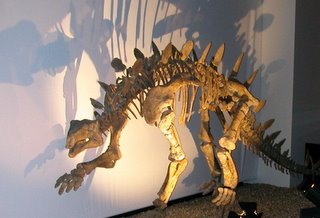 How do scientists reconstruct a dinosaur?
How do scientists reconstruct a dinosaur?First of all, it is not that every organism can be preserved and found later as a fossil. Bones, the hardest part of vertebrates, have the highest possibility to to be preserved, however the preservation will depend on whether or not they were buried within sedimentary rocks that can prevent them from decaying. If the bones were buried in shallow sediments and exposed to living microbes or get oxidised, then the chance is small for it to preserve.
Secondly, scientists rarely can discover the complete bones of a dead organism which has become fossil. Sometimes they found the teeth only, or if lucky they can find more bones, such as limbs, back bones and ribs. Scientists do their best to recognise which fossil is which bone and how they relate to each other to form an organism in the past. They measure the sizes of the discovered fossils and based on these pieces of bones they try to imagine how big the animal was, how long their limbs were and so on.
Thirdly, scientists need helps from artists to visualize their interpretation of "an organism" into a three dimensional creature. A dinosaur displayed in a museum is a result of collaboration from scientists and artists, it is not the work of scientists alone.
So, if scientists want to put a smile on the face of a dinosaur displayed in a museum, they actually can do it. A smiling and friendly dinosaur. Cool!

No comments:
Post a Comment